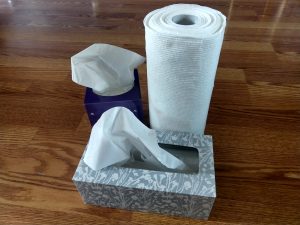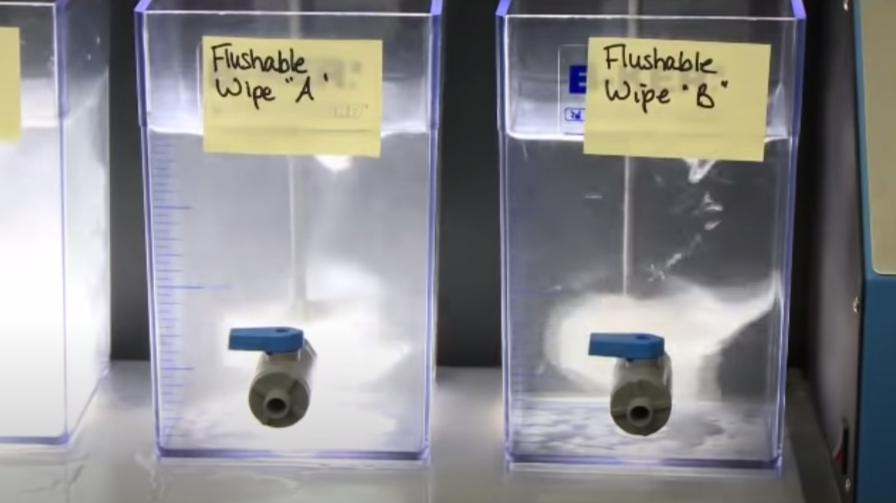To Flush or Not to Flush?
Can More Than Toilet Paper Really Go Down the Drain?
That seems to be the most important question on everyone’s mind these days. Over the years people pick and choose what they think is appropriate to flush down the drains and it seems that there are more wrong answers when it comes to this list than right answers. The Federal government and every state have opinions in how the municipal wastewater systems work. Because each system is designed and built based on the area it serves, no two answers may be the same.
For example, a small suburb of Cleveland on the southeast side has over 23 lift stations for a system that has about 65 miles of sewers. A large system like a regional district can cover a large portion of the county area. It can have two or three major wastewater plants handling about 100 million gallons per day (MGD) of sewage each day. When it rains, they may have sewer overflows due to combined sewers or infiltration. While most of these are probably contained, it can be a problem for the plants and the environment. So it can make a big difference in what you flush down your drains and where it goes.
For this list, I did a quick check around the local area to see if anyone has something on their list that does not appear on others’ lists. Below is what most professionals agree can be flushed:
- Most agree that toilet paper is no problem. It does not matter if it is 2-ply or 3- ply. Toilet paper is made to break down in the sewer system as it makes its way to the treatment plant.
- For obvious reasons, human waste is also acceptable to be flushed down the drain.

That’s about the extent of what is acceptable to be flushed down the sewer system. Now you may ask what about industrial or commercial clients. Certainly, they don’t flush just those two items down the drain and you would be correct. However, they are given guidelines. Most of these clients likely have a Pretreatment Discharge Permit, which spells out what they can and what they cannot send down a sewer system. Then if they do discharge something else, they are charged a higher fee based on their pounds loading down the system. This allows the treatment plant to use that money to remove the additional loadings without a burden on the taxpayers or the environment.
Videos to Share with the Public
Flushing comparison of toilet paper to “flushable” wipes
from Seattle Public Utilities
Link to share: https://youtu.be/V7bb9PuNoxg

Lab Simulation
A pre-treatment technician shows how different products flush or don’t flush in a lab simulation
from Water Environment Federation
Link to share: https://youtu.be/SLTVqkXVvNk

Follow us on
About The Author
The President and founder of Data-Command with over 25+ years of business development, 35+ years of automation, and 40+ years of software development experience. In 2005, Data-Command was born from his passion to provide information to municipalities and industry that would have a positive impact on their operations, and he has never lost this passion.

